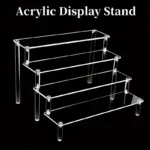A true solution is a homogeneous mixture where the solute is completely dissolved in the solvent, forming a single phase. Understanding the characteristics of true solutions is essential in fields such as chemistry and pharmacology. Let’s explore the statements and determine which one is incorrect regarding true solutions.
Key Features of True Solutions
1. True Solutions Are Homogeneous
- Correct: A true solution is homogeneous, meaning that the solute is completely dissolved in the solvent, resulting in a uniform composition throughout the mixture. This uniformity is one of the defining features of a true solution.
2. The Solute in a True Solution Cannot Be Separated by Filtration
- Correct: In a true solution, the solute is dissolved at the molecular or ionic level, making it impossible to separate the solute from the solvent by filtration. The particles are too small to be caught by filter paper.
3. True Solutions Exhibit Tyndall Effect
- Incorrect: The Tyndall effect occurs when light is scattered by colloidal particles in a mixture. True solutions do not exhibit the Tyndall effect because the solute particles in a true solution are too small to scatter light. Only colloidal solutions or suspensions show the Tyndall effect.
4. True Solutions Can Be Liquids, Solids, or Gases
- Correct: True solutions can exist in various phases—liquid, solid, or gas. For example, salt dissolved in water forms a liquid solution, while a gas like oxygen can dissolve in water to form a gaseous solution.
Conclusion
The incorrect statement is: “True solutions exhibit Tyndall effect.” True solutions do not exhibit the Tyndall effect because their solute particles are too small to scatter light.
Share this content:







